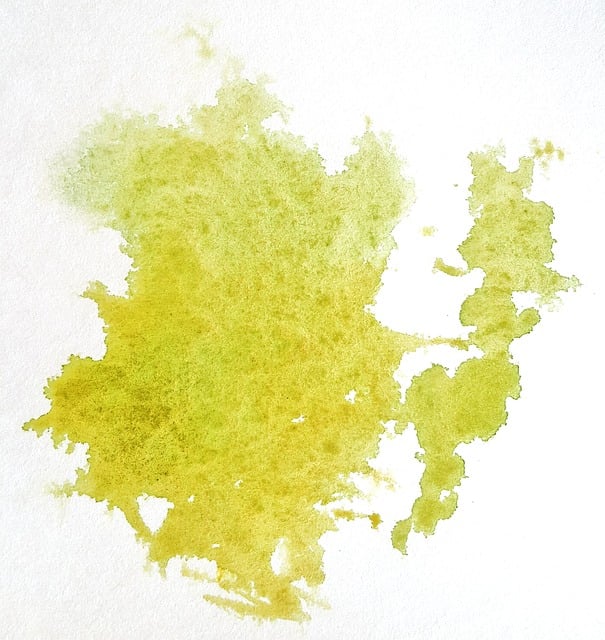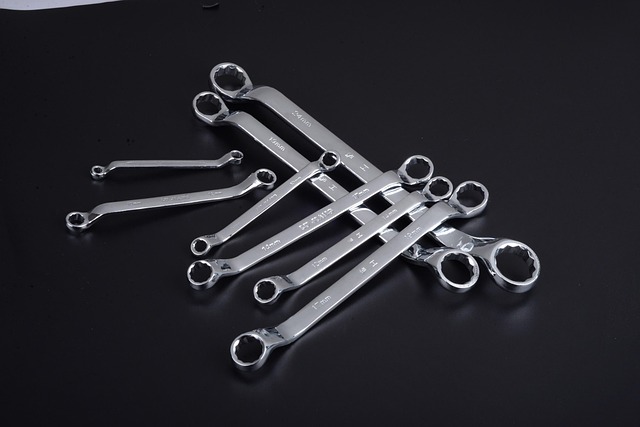Grout stain removal is a common homeowner task driven by daily use and environmental factors. Porous grout easily absorbs liquids and stains from activities like cooking, cleaning with harsh chemicals, or exposure to foods and beverages. Moisture buildup due to humidity or leaks also contributes to stain formation. The type of grout plays a role; some are more porous and susceptible to dyes. Effective removal requires the right tools, materials, and methods. Start with a high-quality grout cleaner, test on a small area, and use a stiff-bristled brush. For severe cases, consider a grout steam cleaner. Regular sealing, cleaning, and maintenance prevent future issues. Natural remedies like baking soda, vinegar, and hydrogen peroxide are accessible options. Professionals use specialized products and techniques, including steam cleaning and chemical cleaners.
Looking to revive your tiled spaces? Deep grout stain removal can transform your home, making tiles sparkle again. This comprehensive guide tackles the age-old dilemma of stained grout, providing solutions from DIY remedies to professional cleaning techniques. We’ll break down the science behind grout stains, equip you with the right tools, and offer a step-by-step process for effective cleaning. Plus, discover maintenance tips to prevent future staining and keep your tiles looking their best.
Understanding Grout Stain Causes

Grout stain removal is often a necessary task for homeowners due to the common issues that arise from daily use and environmental factors. Understanding the causes behind grout stains is the first step in effective removal. Grout, composed of sand, cement, and water, is naturally porous, making it susceptible to absorbing liquids and stains. Everyday activities like cooking, cleaning with harsh chemicals, or even exposure to certain foods and beverages can lead to discoloration. Additionally, moisture buildup from high humidity or leaks can contribute to stain formation.
Another significant factor is the type of grout used. Different grouts have varying levels of resistance to staining. Some grouts may be more porous and therefore more prone to absorbing dyes from substances like ink, wine, or even sweat. Knowing the grout composition can help in choosing the right cleaning methods for efficient grout stain removal.
Essential Tools and Materials for Stain Removal

When tackling deep grout stain removal, the right tools and materials are essential for achieving a clean, professional result. Begin with a good quality grout cleaning solution designed specifically for removing tough stains. These solutions often contain powerful enzymes or acid-based ingredients that effectively break down and eliminate dirt, mold, and other contaminants embedded in the grout. Always test the cleaner on a small, inconspicuous area first to ensure it won’t damage or discolor your grout.
Complementing your cleaning solution will be a variety of tools, such as a stiff-bristled brush, a spray bottle, rubber gloves, and a wet/dry vacuum or sponge. The brush helps agitate the cleaner and loosen stubborn stains, while the spray bottle allows for precise application. Gloves protect your hands from harsh chemicals, and the vacuum or sponge facilitates efficient cleaning by removing excess solution and dirt. For particularly severe stains, a grout steam cleaner can be a valuable investment, as high-pressure steamed water cuts through grease, grime, and even mold effectively.
Step-by-Step Guide to Deep Grout Cleaning

Removing deep grout stains can seem daunting, but with a few simple steps, you can restore your tiled surfaces to their original gleam. Begin by vacuuming or sweeping the floor to remove any loose debris. Next, mix a solution of warm water and mild detergent in a bucket, ensuring it’s suitable for porous materials like grout. Dip a soft-bristled brush into the solution and gently scrub the stained areas, working in small sections to avoid missing spots. For tougher stains, apply a grout cleaning product directly onto the discolored areas and let it sit for the recommended time. After treatment, rinse thoroughly with warm water and dry the floor with a clean towel or leave it to air-dry. Regular cleaning and sealing will prevent future grout stains from setting in.
Effective Home Remedies for Grout Stains

When it comes to tackling grout stains, there are several effective home remedies that can help restore the freshness of your tiled spaces. Baking soda and vinegar are a dynamic duo; their natural cleaning properties make them perfect for removing stubborn stains. Create a paste by mixing baking soda with water, apply it to the stained area, then gently scrub with a soft-bristled brush before rinsing with warm water. Vinegar is another powerful ally—its acetic acid content cuts through grime and dislodges dirt. Spray undiluted vinegar directly onto the stain, let it sit for about 15 minutes, then wipe clean.
For tougher stains, consider using lemon juice, which acts as a natural bleach. Apply fresh lemon juice with a cloth, leave it on for an hour or so, and then rinse. If your grout has yellowed over time, try a mixture of water and hydrogen peroxide; this combo is effective at bleaching and brightening without harsh chemicals. Always test any home remedy on a small, inconspicuous area first to ensure the grout isn’t damaged. With these simple, natural solutions, achieving stain-free grout is well within reach for any DIY enthusiast.
Professional Cleaning Techniques and Products

Professional cleaning techniques for grout stain removal often involve specialized products designed to tackle tough, ingrained dirt and stains. One common method is steam cleaning, which uses high-pressure steam to loosen and break down grime. This technique is effective for removing surface stains and can be safely used on most types of grouts.
Chemical cleaners are another crucial tool in a professional’s arsenal. These products contain powerful yet safe ingredients that penetrate deep into grout lines, dissolving oils, grease, and other substances responsible for stubborn stains. When combined with scrubbing tools or brushes, these chemicals can effectively restore the original brightness and color of the grout. Always follow manufacturer instructions when using chemical cleaners to ensure safety and optimal results in grout stain removal.
Maintenance Tips to Prevent Future Staining

Regular maintenance is key to preventing future grout stain removal issues. Keeping your grout lines clean and sealed can significantly reduce the chance of staining. Use a soft-bristled brush to gently scrub away any dirt or debris that accumulates between the grout joints, ensuring you do this regularly to avoid buildup.
Additionally, applying a high-quality grout sealer after cleaning will create a protective barrier against stains caused by moisture and common household substances. Remember to reapply the sealer every few years to maintain its effectiveness, making it an easy and effective step in your regular home care routine.
